5 Tips for Choosing the Right 2 PVC Valves for Your Project
Table of Contents
- Understanding PVC Valve Types: Ball vs. Gate vs. Butterfly
- Considerations for Valve Pressure Ratings and Industry Standards
- Evaluating Flow Capacity: The Importance of Cv Values in PVC Valves
- Temperature Limitations: Selecting PVC Valves for Extreme Conditions
- Assessing Cost vs. Longevity: The Financial Impact of Quality PVC Valves
- Installation and Maintenance: Ensuring Optimal Performance of PVC Valves
- Choosing the Right Plastic Valves: A Guide to CPVC Ball Valves for Your Plumbing Needs
- FAQS
- Conclusion
- Related Posts
Picking the right 2 PVC valves for your project isn’t just a small detail — it’s actually pretty important if you want things to run smoothly, safely, and last a good long time. Here at Ningbo Pntek Technology Co., Ltd., we’ve been smoothing out the process of supplying plastic pipes, fittings, and valves for over a decade. We totally get how tricky it can be to choose the right parts for your specific needs.

The market’s flooded with so many options that it can really feel overwhelming. In this blog, I’ll share five handy tips to make your decision a lot easier and help you pick the best 2 PVC valves that fit your project perfectly. Whether you’re setting up a brand-new system or just upgrading what you already have, knowing what to look for can save you a bunch of time and headaches down the line.
Understanding PVC Valve Types: Ball vs. Gate vs. Butterfly
So, if you're diving into a plumbing project and trying to choose the right type of PVC valve, it's pretty important to understand the differences between ball, gate, and butterfly valves. Ball valves are kinda the go-to when you need quick shut-offs and reliable flow regulation — they’re great if you want something that works instantly. Interestingly, the global $1.8 billion API 6D ball valve market is expected to hit around $1.8 billion by 2033, which really shows just how much these valves are needed across industries. The increasing market size actually highlights how crucial it is to pick the right one based on what your project needs.

On the flip side, gate valves are super straightforward — they let you turn the flow on or off without much fuss. But they’re not the best for fine-tuning flow (throttling), so keep that in mind if efficiency is your main goal. Then there are butterfly valves, which are pretty lightweight and compact — especially handy if you’re working with bigger systems. With the semiconductor valve market expected to boom from around $2.59 billion in 2024 to over $5.5 billion by 2033, it’s definitely worth thinking about how each of these valve types fits into your bigger project plans. Companies like Ningbo Pntek are really key players, offering top-quality plastic pipes, fittings, and valves — helping folks like us make smarter choices when it comes to these critical components.
Considerations for Valve Pressure Ratings and Industry Standards
When you're picking out PVC valves for your project, one thing you really want to keep in mind is making sure they meet the right industry standards, especially when it comes to pressure ratings. The Plastic Pipe and Fitting Association (PPFA) points out that the pressure rating can make a big difference in how well your system performs and how safe it is overall. Usually, valves are rated by their Maximum Allowable Working Pressure (MAWP), which changes depending on the valve’s size and the temperature it's exposed to. For instance, standard PVC valves can handle anywhere from around 100 psi up to over 300 psi—that’s depending on their diameter and the environment you’re using them in.
A quick tip—always make sure to check the manufacturer's datasheet before you settle on a valve. Honestly, taking a minute to verify the pressure rating can save you big headaches later on and prevent system failures caused by under-rated parts.
And don’t forget, it’s super important to ensure your valves meet industry standards like NSF/ANSI 61, especially if you’re working with drinking water systems. This standard is key because it guarantees the materials in the valve won’t leach harmful stuff into the water, which is obviously a big deal.
My second tip—look for valves that are certified to meet these safety standards. It’s a little extra effort that can give you peace of mind, knowing you’re not only making your install reliable but also safeguarding the health of whoever ends up using the system.
Evaluating Flow Capacity: The Importance of Cv Values in PVC Valves
When you're choosing PVC valves for your project, getting a handle on flow capacity is super important. You’ve probably heard of the Cv value, or flow coefficient — it basically shows how much water can pass through a valve with just a one psi pressure drop. Knowing this helps you figure out how efficient a valve is for what you need. Generally speaking, a higher Cv means the valve can handle more flow, which is a big deal if you’re moving a lot of fluid. Just make sure to compare those Cv numbers to your system’s needs—that way, you pick a valve that works smoothly without causing any unnecessary backpressure or flow hiccups.
But here’s the thing: the Cv value isn’t just some random number. It actually gives you a pretty good idea of how a valve will perform under different conditions. You should consider the type of fluid you're working with, the pressure it’ll be under, and the temperature — all these factors can really impact how much flow you get. It’s a good idea to do the math and figure out what Cv you need for your setup, so you end up choosing a valve that fits like a glove. If you keep Cv in mind when you're making your choice, you’ll find your system runs a lot more reliably and efficiently, making your whole project run a lot smoother from start to finish.
Flow Capacity Comparison of PVC Valves
This chart illustrates the flow capacity (Cv values) of different types of PVC valves, which is crucial in selecting the right valve for your plumbing projects. Higher Cv values indicate better flow capacity, making it essential for evaluating performance in various applications.
Temperature Limitations: Selecting PVC Valves for Extreme Conditions
When you're picking PVC valves for really extreme temperature conditions, it's super important to understand what the material can handle. Usually, PVC works well within a temperature range from about 32°F to 140°F (that’s 0°C to 60°C). But here’s the thing—some applications might push those limits, and that needs to be taken into account. I came across a report from the Plastics Pipe Institute that says if you go beyond these temperatures, the strength of PVC can drop, increasing the risk of valve failure. If you're dealing with hotter environments, you might want to look into options like CPVC or PVDF instead—they can handle up to 200°F (93°C) and 284°F (140°C), respectively.
Also, don't forget to check for industry certifications when choosing PVC valves. Valves that meet ASTM standards are a good bet—they’re a solid proof that the valve can perform under the conditions you need. And besides temperature, make sure to consider the pressure ratings too. ASTM has specific guidelines on pressure for different PVC types, so you want to pick a valve that’s not only good with heat but also strong enough to handle your system’s pressure requirements.
Lastly, take a good look at the environment where the valves will be used. If temperatures fluctuate a lot, it’s wise to go for valves with better thermal stability. This way, you lessen the risk of issues caused by expansion or contraction due to temperature changes, which can really mess things up. And whenever possible, buy from reputable manufacturers—they usually provide better info about how their valves perform under extreme conditions and how long they last. Trust me, it’s worth the extra effort to get it right.
5 Tips for Choosing the Right PVC Valves for Your Project - Temperature Limitations: Selecting PVC Valves for Extreme Conditions
| Feature | Description | Temperature Range (°F) | Common Applications |
|---|---|---|---|
| Standard PVC Valve | General-purpose valve suitable for various applications. | 32 to 140 | Water, air, and light chemicals |
| High-Temperature PVC Valve | Designed to withstand higher temperatures. | 32 to 180 | Chemical processing and hot water |
| CPVC Valve | Chlorinated PVC for better heat resistance. | 32 to 210 | Hot water plumbing systems |
| PVC Ball Valve | Offers excellent flow control and quick shut-off. | 32 to 140 | Irrigation, pool systems, and industrial use |
| Socket Weld PVC Valve | Ideal for rigid piping applications, welded for durability. | 32 to 140 | Industrial applications, water distribution |
Assessing Cost vs. Longevity: The Financial Impact of Quality PVC Valves
When you're picking PVC valves for your project, it's pretty important to find that sweet spot between how much they cost and how long they'll last. Sure, high-quality PVC valves might cost more upfront, but honestly, they tend to hold up much better and can save you quite a bit in the long run. On the flip side, dirt-cheap options might save you some money initially, but they often need replacing or repairs pretty often — and those hidden costs can really add up, sometimes outweighing what you saved at the start. In industrial setups, where a bit of downtime can mean losing a good chunk of revenue, investing in solid, durable valves is kinda a no-brainer—it pays off over time.
And it’s not just about saving on maintenance, either. Good quality PVC valves help keep your system running smoothly — fewer leaks, fewer issues that could stop things in their tracks. Choosing valves from trusted manufacturers doesn't just mean you're getting a quality product; it also helps you stay compliant with safety standards, which is pretty important. At the end of the day, you really wanna think about the value you’re getting over the entire lifespan, not just the sticker price. Quality valves give you peace of mind and can actually save you money in the long run. Trust me, it’s worth it!
Installation and Maintenance: Ensuring Optimal Performance of PVC Valves
When you're choosing PVC valves for your project, it’s super important to install and maintain them properly if you want everything to run smoothly. First off, make sure to follow the manufacturer’s instructions carefully during installation. And just a little tip—don't overtighten the connections, as that can cause leaks or shorten the valve's lifespan. Using the right sealants and tools designed specifically for PVC work can really save you headaches later on.
Keeping up with regular maintenance is just as key. It’s a good idea to check your valves now and then for any signs of wear or damage—things like cracks or leaks. If you notice something off, don’t wait too long to fix or replace it. That way, you’ll avoid bigger problems down the road. At Ningbo Pntek Technology Co., Ltd., with over ten years of exporting experience, we know how important it is to use top-quality valves. We’re dedicated to providing reliable products and support so your systems keep running without a hitch.

Choosing the Right Plastic Valves: A Guide to CPVC Ball Valves for Your Plumbing Needs
When it comes to selecting the right plastic valves for plumbing applications, particularly in terms of CPVC ball valves, a few critical aspects must be considered. CPVC (Chlorinated Polyvinyl Chloride) is an increasingly popular material due to its excellent resistance to corrosion, high temperature tolerance, and reliability in transporting potable water. According to industry reports, CPVC can withstand temperatures up to 200°F, making it ideal for both hot and cold water systems in residential and commercial settings.
When choosing CPVC ball valves, it's essential to evaluate the appropriate valve type and pipe size needed for your specific installation. Available in a range of pipe sizes, including 1/2", 3/4", 1", 1-1/4", 1-1/2", and 2" inch diameters, these valves provide flexibility for various plumbing configurations. For instance, a 1-1/2" inch CPVC ball valve, which is priced at just $0.10 per piece with a minimum order of one piece, presents an economical option for enhancing the efficiency of your plumbing system.
Moreover, CPVC ball valves are designed for longevity and ease of use, ensuring minimal maintenance over their lifespan. As noted in various manufacturers’ reports, the demand for CPVC valves is expected to rise significantly due to their cost-effectiveness and ease of installation compared to traditional metal valves. As more users recognize the benefits of CPVC in plumbing applications, understanding how to select the right valve type will be paramount in optimizing system performance.
FAQS
: Valve pressure ratings, as defined by Maximum Allowable Working Pressure (MAWP), are crucial for ensuring the performance and safety of your system. They can range from 100 psi to over 300 psi, depending on the valve size and application.
Always consult the manufacturer’s datasheet to verify the valve pressure rating before making a selection, which helps avoid potential system failures due to under-rated components.
Compliance with NSF/ANSI 61 ensures that the materials used in the valve do not leach harmful contaminants into the drinking water supply, crucial for safety and reliability.
PVC valves generally function effectively within a temperature range of 32°F to 140°F (0°C to 60°C). Exceeding these limits can lead to diminished strength and potential valve failure.
For high-temperature applications, consider using alternatives like CPVC, which can withstand temperatures up to 200°F (93°C), or PVDF, which can handle up to 284°F (140°C).
PVC valves should comply with ASTM standards, which provide assurance of the valve's performance under specified conditions, including pressure and temperature ratings.
Proper installation according to manufacturer specifications ensures tight connections to prevent leaks and extend the valves' lifespan.
Regular inspections should be conducted to check for signs of wear, such as cracks and leaks, followed by timely repairs or replacements to avoid more significant issues.
In areas prone to temperature fluctuations, opting for valves with higher thermal stability helps mitigate the risks associated with thermal expansion or contraction, thus preserving valve integrity.
Sourcing valves from reputable manufacturers is crucial, as they are more likely to provide reliable data on thermal performance and longevity under extreme conditions.
Conclusion
Picking the right pair of PVC valves for your project isn’t just about ticking boxes—it’s pretty much the key to making sure your system runs smoothly and lasts. First off, get familiar with the different types of PVC valves out there—things like ball, gate, and butterfly valves. Each one’s better suited for certain jobs, so knowing what each does helps a lot. Don’t forget to check their pressure ratings and make sure they meet industry standards; safety and compliance are super important. Also, taking a quick peek at the flow capacity, through Cv values, can really help you figure out which valve will keep your flow just right.
Oh, and keep an eye on temperature flexibility too—some PVC valves can handle extreme heat or cold, so you want to pick ones that won’t give out under tough conditions. Balancing cost and durability is kinda a big deal—spending a little more on good quality valves can save you a bunch in the long run, with fewer replacements needed. And of course, proper installation and regular maintenance make all the difference—they’ll keep your valves working at peak performance and help you get the most out of your setup.
By the way, with over 10 years of exporting experience, Ningbo Pntek Technology Co., Ltd. is here to help you find the best PVC valves for your project—so don’t hesitate to reach out if you need a hand!
Related Posts
-
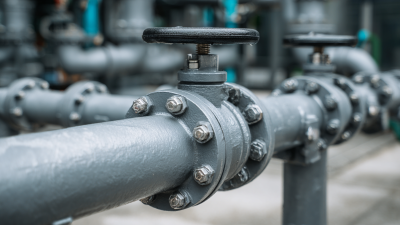
7 Essential Tips for Choosing the Best 6 PVC Ball Valves for Your Projects
-
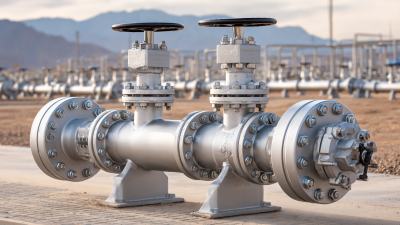
How to Evaluate the Cost Effectiveness of PVC Gate Valves for Your Procurement Needs
-
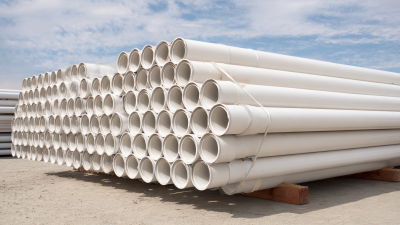
How to Choose the Right U Pvc Pipe for Your Project
-
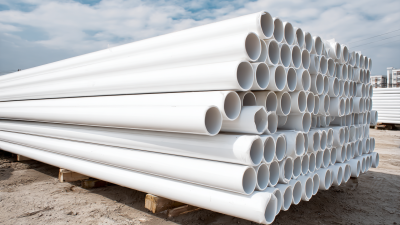
7 Essential Tips for Sourcing Upvc Pipes: What Every Global Buyer Needs to Know
-
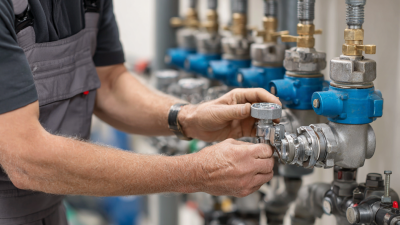
How to Choose the Right 1 Inch PVC Valves for Your Plumbing Needs
-
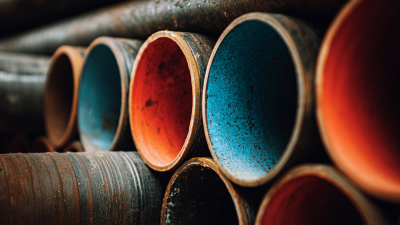
7 Essential Tips for Maximizing the Efficiency of Dipson Pipe in Your Projects

Isabelle
Application

Underground pipeline
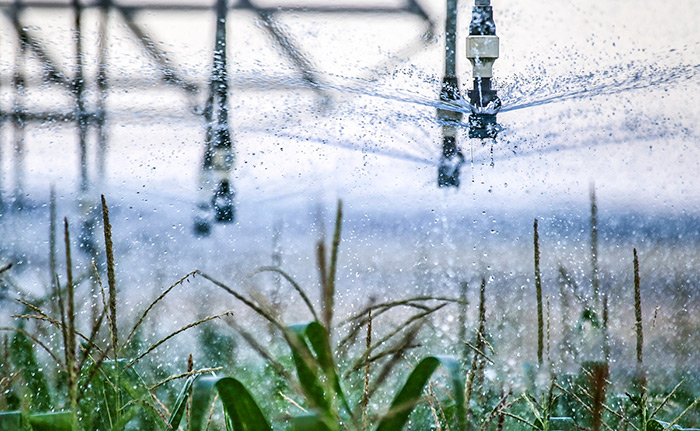
Irrigation System

Water Supply System


